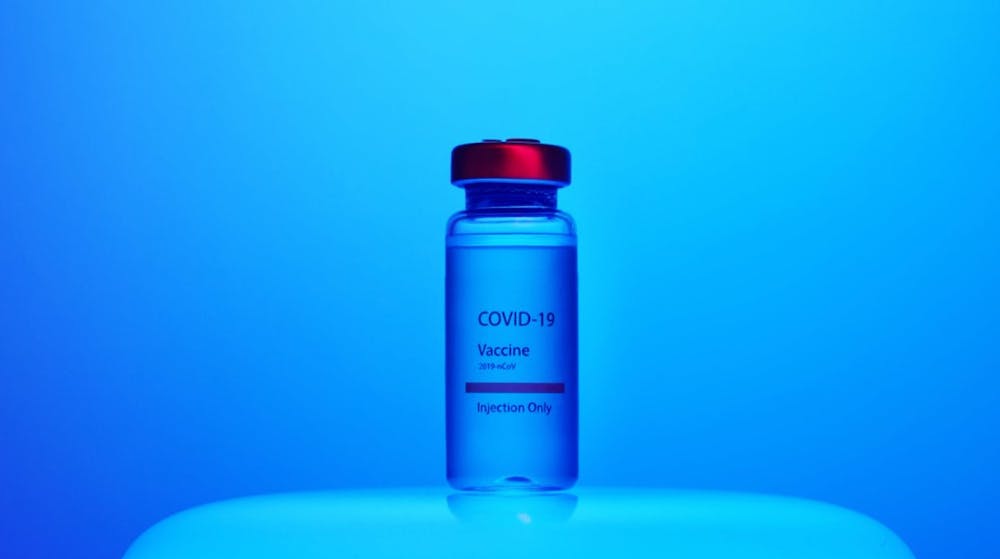News of the COVID-19 vaccine has been dominating news headlines and giving people around the world a sliver of hope before the end of the year.
On Nov. 20, Pfizer’s messenger RNA (mRNA) vaccine became the first COVID-19 vaccine to file for emergency use authorization (EUA) with the Food and Drug Administration (FDA). Excitement for Pfizer’s vaccine success came days before Moderna’s release of efficacy results.
It has been a month of vaccine breakthroughs — on Nov. 18, AstraZeneca and the University of Oxford released promising phase two and three data for their chimpanzee adenovirus vaccine. Additionally, Europe, Japan, Australia and Canada are celebrating the reviews of their vaccine developments.
You may have seen headlines declaring Pfizer’s vaccine as “90% effective” and Moderna’s as “94.5 % effective.” Such large percentages may be enough to convince you to receive the vaccine jab immediately, but what does this number mean in terms of efficacy?
Vaccine clinical trials primarily determine efficacy through primary and secondary endpoints. Pfizer stated that its primary endpoint is confirmed COVID-19 cases after seven days following second dose receival, and its secondary endpoint is cases occurring 14 days from the second dose. The Pfizer phase three clinical trial’s 90% efficacy rate revealed that participants were protected against the virus for up to 28 days after receiving the vaccine.
While the vaccine race is closely approaching the finish line, it is still too early to know whether long-term immunity from the virus is guaranteed.
We are currently witnessing vaccine development break the boundaries of scientific discovery; over 30 companies have vaccine candidates enrolled in over 50 clinical trials. Researchers are using new technologies and combining them with traditional means to produce a variety of vaccine methods against COVID-19.
The current vaccine strategies can be categorized into four main groups: RNA, DNA, weakened virus and protein-based vaccines. There are similarities and differences across all the candidates, and how they work makes them all unique.
RNA vaccines
Interestingly, both vaccine frontrunners fall into the RNA-based vaccine category. A common misconception for mRNA vaccines is that they directly inject the virus’ material into a person. However, the vaccine instead introduces the mRNA of only a portion of the virus, specifically the virus’ spike protein.
The vaccine is injected into your arm, introducing mRNA that instructs your cells to produce viral proteins, such as the spike protein. The proteins synthesized from the mRNA will elicit an immune response and produce antibodies. If you were to be exposed to the virus, your immune system would recognize it and produce antibodies to fight off the infection.
One benefit of RNA and DNA-based vaccines is that they can be produced in a matter of days. DNA, however, is more stable than RNA and does not have to be stored at below-freezing temperatures.
DNA vaccines
The mechanism of DNA-based vaccines is similar to a RNA-based vaccine — both prepare the immune system to recognize and fight an intruder. They do so by introducing a genetic code into cells, allowing them to manufacture a piece of the virus.
COVID-19 is an RNA virus, but DNA vaccines are strategic in their approach to target COVID-19. They first introduce DNA into an individual’s skin cell. The DNA then instructs the cell to produce antigens encoded by the DNA. Once antigens are manufactured, the immune system is able to produce a strong immune response.
In addition to the popular DNA and RNA-based vaccines, weakened virus and protein-based vaccines have had successes in early phase clinical trials.
Weakened virus vaccines
The Oxford and AstraZeneca COVID-19 vaccine ChAdOx1 is an example of a weakened adenovirus vaccine. The adenovirus was originally known to cause the cold in chimpanzees but has now been genetically modified to be unable to replicate. Oxford has also sequenced the spike proteins on the surface of the COVID-19 virus and introduced this sequence into the chimpanzee adenovirus vector.
The adenovirus vaccine creates a strong immune response — as RNA and DNA-based vaccines do. Once the viral vector is introduced in your body, your cells express the virus’ spike proteins. Your body will produce antibodies against the proteins and viruses, initiating an immune response.
Protein-based vaccines
Out of all the main vaccine methods, protein-based therapeutics may be the most strategic. RNA and DNA-based vaccines require that their genetic material enter cells, which subsequently have to assemble parts of the protein in order to elicit an immune response. In contrast, protein-based vaccines offer a direct path to stimulating our immune system.
Protein-based vaccines contain pieces of the viral pathogen that are typically genetically engineered into yeast. An immune response is immediately activated once it is introduced to the body. This cuts several steps that RNA and DNA vaccines require before activating the immune system.
The FDA is planning to review Pfizer’s EUA request on Dec. 10 and is broadcasting the meeting on major social media platforms.
With the holidays approaching, a vaccine approval could be the most important gift the world receives. While we patiently wait for a safe vaccine, it is crucial we adhere to public health guidelines and stay safe ourselves.

















